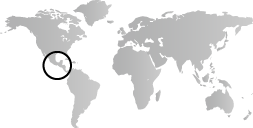Indian populations are subject to Spanish rule, directed through Mexico City, capital of the Viceroyalty of New Spain. Native social, economic, and political institutions are replaced with a full array of Spanish establishments. Remote areas, especially along the Caribbean coast of Central America, remain outside direct Spanish control throughout the period. Some are eventually colonized by England (Belize and the Mosquito coast of Nicaragua). Spanish is the official language and Catholicism the state religion. Membership in the Catholic Church is required of loyal subjects. Native devotions, including conspicuous objects and sacred practices, are destroyed or forbidden. In Mexico, the economy is based on mining and agriculture. The land is largely owned by a growing number of wealthy criollos (Spaniards born in the Americas). Large landed estates, or haciendas, and lavish city residences are built. Indian complaints about mistreatment and loss of land lead to changes in the labor laws. Wage labor is established, although most Indian communities are landless, even losing their role as suppliers of food to the growing colonial cities with the commercialization of farming and animal husbandry. The emerging colonial elite begins to seek more freedom from the Spanish crown.
Growing prosperity in New Spain leads to a strong demand for works of art, from painting and sculpture to furniture, ceramics, and silver objects. Churches, smaller than the earlier massive mission examples, display exuberant ornamentation on their facades and richly carved altars inside. Native artists, having received European training, continue their crafts.


